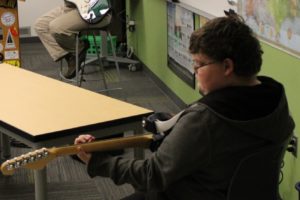Today and forever, Ava Watson has a lot to be thankful for.
When Ava was 7 years old, she was diagonsed with spastic cerebral palsy and Charcot-Marie-Tooth (CMT) disease, an incurable and sometimes debilitating, degenerative nerve disease that impacts about 3 million people worldwide and is, according to the Mayo Clinic, typically diagnosed in adolescence or early adulthood.
Washougal resident Sarah Howe, Ava’s mother, was relieved to find an answer to her daughter’s condition after more than a year of searching. But at the same time she felt scared.
“I’ll never forget that drive home from the children’s hospital,” Howe said. “I got stuck in traffic. I’m sitting there with all of these overwhelming feelings, and I just want to get home. I started crying in the car. I didn’t know what the prognosis was. (I was thinking), ‘What is this disease? What does this mean for Ava?'”
Howe eventually found the answers to those questions. Ava, 12, now a sixth-grade student at Jemtegaard Middle School (JMS), has received treatment for her condition, which has “plateaued,” at least for now.
Ava is a straight-A student, writer and aspiring runner.
Through her barrage of doctor’s visits, physical therapy sessions, casts and leg braces, Ava has managed to keep a positive attitude.





